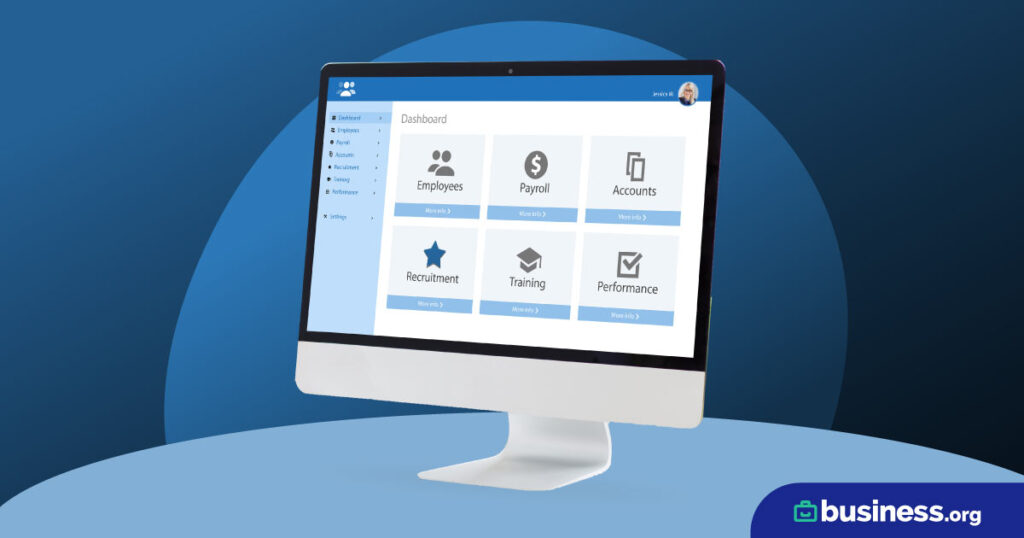We are committed to sharing unbiased reviews. Some of the links on our site are from our partners who compensate us. Read our editorial guidelines and advertising disclosure.
What Is a Payroll Card?
If some of your employees lack checking accounts, they might prefer to be paid with payroll cards. Payroll cards function like pre-loaded debit cards; at the end of each pay period, employers transfer an employee’s wage or salary directly to the card so employees can access funds immediately. And like debit cards, payroll cards can be used to withdraw funds from ATMs, shop, receive cash back, or pay bills automatically.
Payroll cards for employees have obvious perks. For employers, dispensing them is cheaper than printing and distributing paper checks. For employees, they make it easy to get cash as soon as possible on payday without the hassle (and potential check-cashing fees) of a bank visit. However, payroll cards have definite drawbacks—especially their fees. If you want to use them, carefully consider your options before signing up.
What are the benefits of payroll cards?
So why are payroll cards needed nowadays? As you already know, direct deposit is a common way to pay employees. Instead of requiring employees to collect checks that they have to cash, employers can directly deposit a worker’s net wage into a checking or savings account at the employee’s financial institution.
But not every employee has access to a bank account: according to data from the World Bank, around 1.7 billion adults worldwide can’t connect with a bank to open an account, get funding, or apply for a loan.1
Most of those adults are located outside of the United States—but not all of them. In fact, 18 million Americans still lack bank access.2 Unfortunately, though, 6.5% of American households still don’t have banking access.3
And nearly 20% of American households are “underbanked,” meaning at least one member of the family has at least one checking or savings account, but the family members largely deal with finances outside the realm of banks.4
So how does low bank access affect you as an employer and small-business owner?
For one thing, it takes direct deposit off the table. And while you can pay unbanked employees in cash or write them a check, checks take time (and money) to print, and cash and checks are much easier to lose. In contrast, if an employee loses a payroll card, they can freeze the card to prevent funds from being stolen while they wait for a new card to arrive.
In short, payroll cards function kind of like a payroll debit card and have several of the same benefits:
- Payroll cards don’t require bank fees or bank access.
- They can be linked to service accounts (like gas or electricity) for easy bill pay.
- They can be used anywhere debit cards are accepted.
- They ensure instant access to funds on payday, just like direct deposit.
- They are more secure than cash or checks.
- They can be used even by employees with bad or no credit.
- They can be used for cash withdrawals at ATMs.
By signing up I agree to the Terms of Use and Privacy Policy.
What are the drawbacks of payroll cards?
If payroll cards for employees are so convenient, why doesn’t everyone use them? For starters, they’re restricted and highly regulated in several states—more on that later. For another, they have some whopping downsides that cancel out some of the perks.
Let’s start with the biggest one: fees. As the employer, you choose which financial institution or credit card company you want to manage your company’s payroll cards. Whatever type of prepaid card you choose, you lock your employees in to paying any fees the card requires—and no matter which credit card company you opt for, rest assured that they will have fees, and your employees are the ones who have to deal with the consequences.
What are those consequences, exactly? Well, unlike banked employees who can use direct deposit, an unbanked employee might have to spend an extra dollar in card fees every time they make a purchase and pay a monthly maintenance fee just to keep their card. In this case, unfair fees are baked into the definition of payroll cards—not exactly a selling point for your business.
Plus, many unbanked households are also low-income households; having to spend extra money just to access their paycheck can hit them extra hard.
Here are some more reasons to consider skipping payroll cards:
- Getting a new card to replace a lost or stolen card often costs extra.
- Checking the card balance or calling customer service often costs extra.
- Checking the card account balance can often only be done over the phone or via text message.
- Employees might be subject to pricey overdraft fees.
Are payroll cards legal nationwide?
Payroll cards are legal everywhere in the United States, Puerto Rico included, but several states restrict or regulate payroll card use. Most of the states with regulations require employers to provide cards that allow at least one free withdrawal.
Plus, if you choose to use payroll cards, you’ll have to explain the ins and outs of payroll cards to your employees. A recent rule released by the Consumer Financial Protection Bureau (CFPB) requires either you or the payroll card provider to tell employees who use the card exactly what fees, terms, and conditions they can expect from the card.
No matter where you are, you can’t force your employees to accept their paycheck via payroll card. As part of the federal Electronic Fund Transfer Act (EFTA), employers have to let employees choose from at least two payment method options. Plus, Regulation E—which lets the government implement the EFTA—guarantees the employees who do choose payroll cards certain rights:
- Financial institutions have to disclose all payroll card fees to the users up front.
- Employees have to be able to find their card balance and transaction history, either online or over the phone.
- Payroll card issuers have to respond to complaints about card errors in a timely manner.
Even if your state doesn’t have strict pay card regulations, do your best to find a payroll card provider that lets employees check their balance and make at least one withdrawal without paying fees. It’s both a best practice for prepaid cards and good business sense—employees are happier and perform better if they know you care.
CFPB: The Consumer Financial Protection Bureau, a government agency dedicated to protecting consumers.
EFTA: The Electronic Fund Transfer Act, which regulates electronic transfers like direct deposit and prepaid payroll cards.
Federal Reserve Regulation E: The part of the EFTA that implements the act and applies specifically to payroll cards.
CFPB prepaid rule: A rule released on April 1, 2019 that requires employers to disclose payroll cards’ terms, conditions, and fees to their employees.
The takeaway
Now that you’ve seen all the payroll card pros and cons, it’s time for the moment of truth: Should you offer payroll cards to your employees, or should you opt out?
The answer depends on your employees’ needs.
If your employees can’t access bank accounts and you can’t afford to print checks, payroll cards can be a safe, secure solution that satisfies both parties. Just make sure you know your state’s regulations concerning payroll cards so you can choose the right provider.
And don’t forget: if you do choose pay cards, always follow best practices. As a small-business owner, you’re perfectly positioned to give each of your employees a level playing field when it comes to accessing their pay. Your employees deserve full access to their paycheck, whether they use direct deposit or a payroll card; giving them that opportunity helps everyone leave work satisfied.
Not sure if payroll cards are right for you? See our Best Payroll Software review to find a payroll service that works for your small business.
Disclaimer
At Business.org, our research is meant to offer general product and service recommendations. We don't guarantee that our suggestions will work best for each individual or business, so consider your unique needs when choosing products and services.




